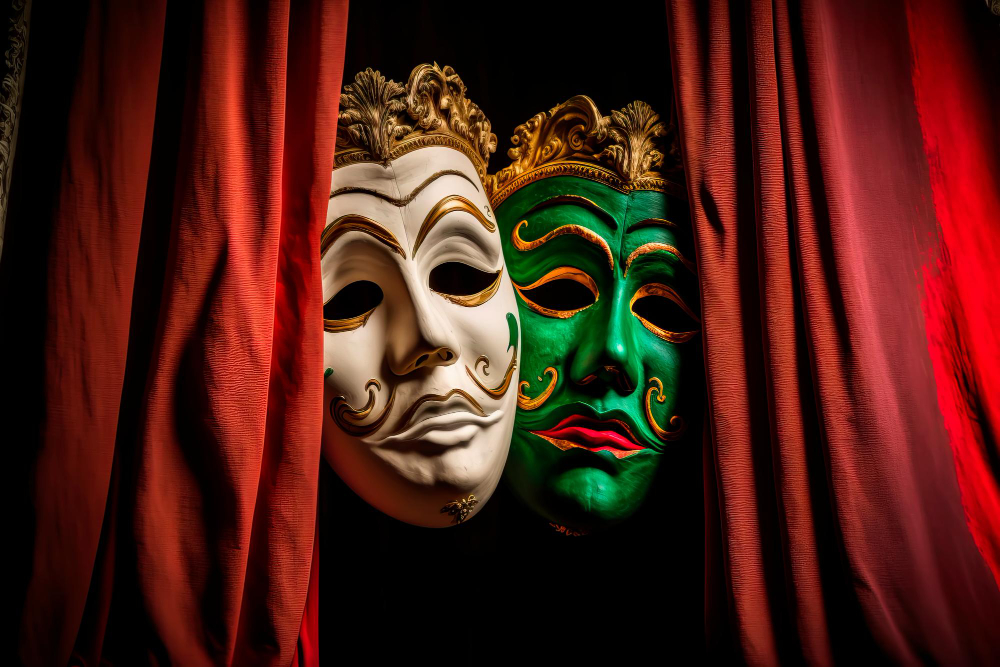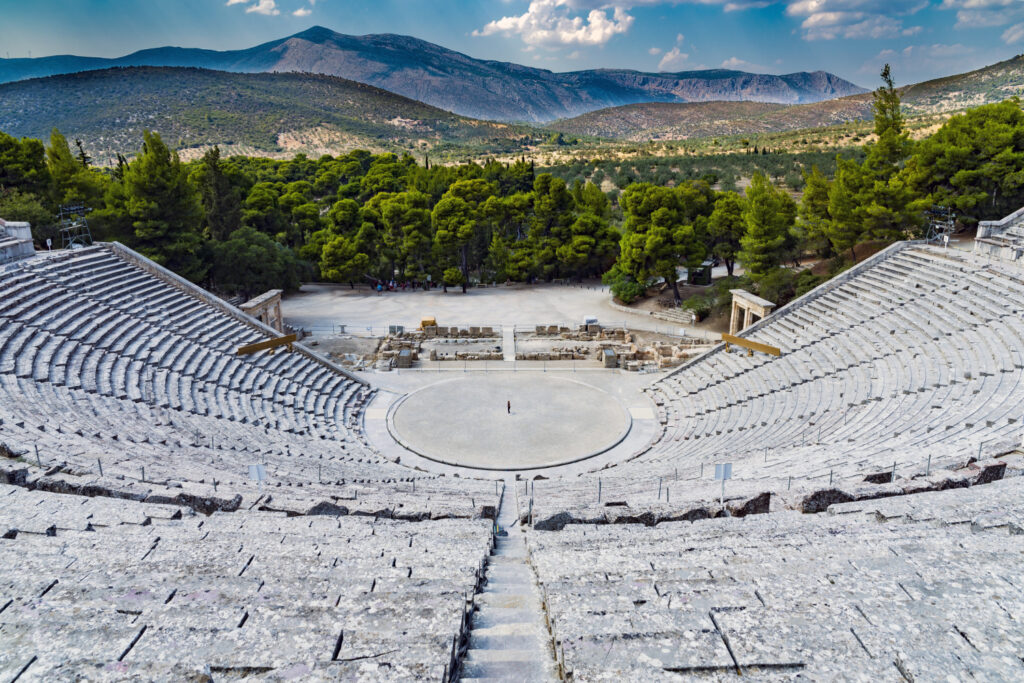
Dramatic Conventions: Masks
Masks: those enigmatic faces that have adorned performers from ancient amphitheatres to modern stages. At a glance, they might just seem like fancy props, but their role in drama is profound, steeped in tradition, symbolism, and raw emotion. So, why have masks been a staple in the world of theatre for millennia? Let’s embark on a journey behind the mask!
A Glimpse into the Past
The use of masks in drama dates back thousands of years, with ancient cultures like the Greeks and Japanese employing them in religious ceremonies, festivals, and theatrical performances. They weren’t just for show; they were powerful tools to convey emotion, character, and story.
The Power of the Mask
While masks can be beautiful or eerie works of art, their role in theatre is multi-faceted:
1. Amplifying Emotion
Masks, especially in ancient theatre, were designed with exaggerated features. This helped distant audience members in large amphitheatres discern the character’s emotions, whether it was the furrowed brow of tragedy or the wide grin of comedy.
2. Transforming Identity
With a mask, an actor can instantly become someone (or something) else. It allows for swift character changes and can imbue a performer with the attributes of the mask, be it an old man, a deity, or a fantastical creature.
3. Universalizing Characters
Masks can strip away specifics, turning a character into a universal symbol. Instead of seeing an individual’s features, audiences see an archetype, making the story more timeless and relatable.
4. Ritual and Spirituality
In many cultures, masks are deeply spiritual. They’re believed to connect performers with deities, spirits, or ancestors, turning the act of theatre into a sacred ritual.
Masks Around the World
Different cultures have their unique takes on theatrical masks:
- Ancient Greece: Masks were essential in tragedies and comedies. They amplified emotion and allowed actors to play multiple roles.
- Noh and Kabuki Theatre (Japan): These intricate masks represent various characters, from women and elders to ghosts and deities.
- Commedia dell’arte (Italy): This comedic form used stock characters, each with their distinct mask, from the sly Arlecchino to the boastful Il Capitano.
Modern Interpretations
While traditional masked performances continue, contemporary theatre and film have also embraced masks in innovative ways:
- Symbolism: Masks can represent themes like duality, hidden identities, or societal masks we all wear.
- Horror Films: Masks have become iconic in the genre, creating a sense of anonymity and fear.
- Performance Art: Masks are used to challenge societal norms, question identity, or simply create captivating visuals.
Conclusion
Masks are more than just pieces of decorated material; they’re transformative tools that bridge the past and present, the individual and the universal. They remind us of the power of theatre to change identities, tell stories, and connect with something greater than ourselves. So, next time you see a mask on stage, look beyond its surface; there’s a world of meaning waiting to be uncovered!






